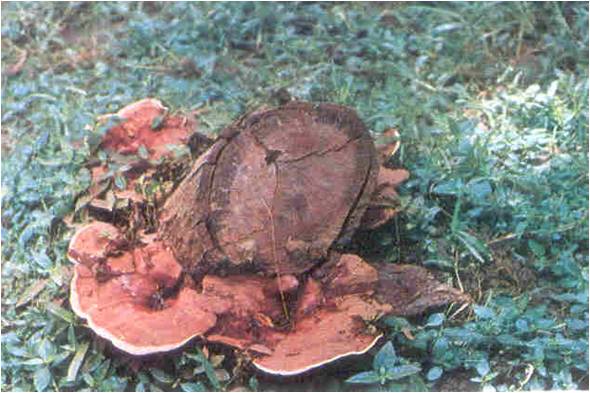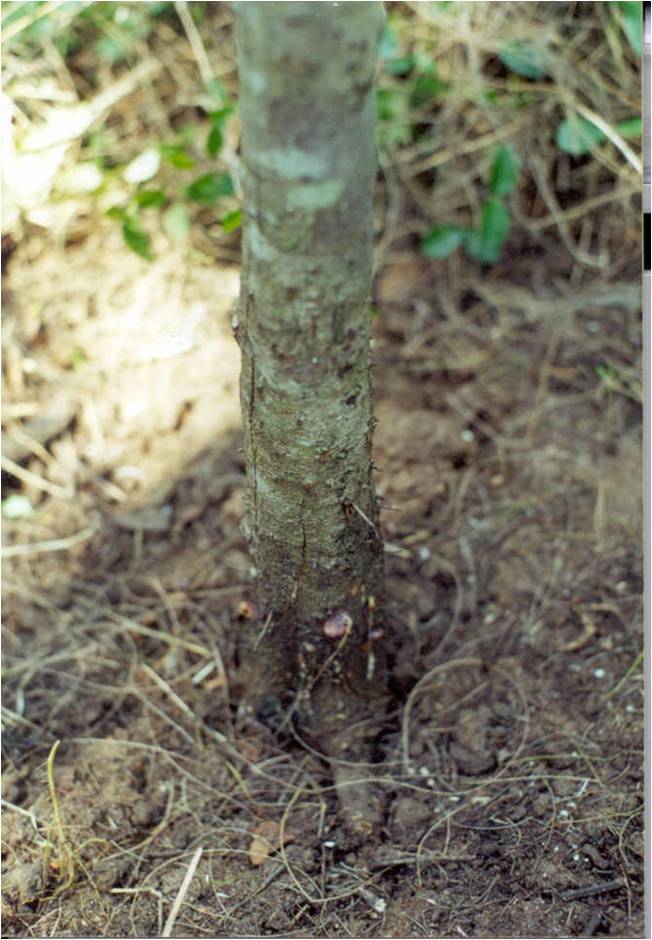Root rot is a major threat to plantation monocultures that have been established on land converted from natural forest with poor land-clearing techniques. Root rot is caused by a group of pathogenic root infecting fungi. They quickly spread in the root system of the host plant (both externally and internally) causing severe damage and at times even leading to the death of the host.
1. Clay or stiffy soil condition of the plantation sites.
2. Improper selection of site or poor site quality.
3. Low species and genetic diversity.
4. Uniform age of plantations create conditions favorable for the development and spread of root-rot pathogens.
5.High virulent pathogen and host susceptibility.
The pathogen has a wide host range such as Acacia, Albizia, Areca, Cassia, Casuarina, Cocos, Dalbergia, Delonix, Eucalyptus, Mangifera, Pinus, Pterocarpus, Pongamia, Pterocarpus, Shorea, Sterculia, Tamarindus, Terminalia etc.
Ganoderma spp. causes root rot in many tree species. Polyporus shoreae causes root rot disease in Sal. Root rot and butt rot diseases are caused by Fomes annosus in conifers. This disease is caused by a fungus, Peniophora rhizomorpho-sulphurea in Teak.
a) Crown dieback and reduced growth. There is a general decline in the crown condition and the growth rate becomes poor.
b) Yellowing of foliage.
c) Young shoots may wilt and trees in advanced stages of root-rot, loss of foliage increases and trees show stag headed appearance and become very susceptible to wind throw.
d) In forest stands, diseased trees tend to be clustered in patches that are roughly circular, due to the spread of root rot from around an initial inoculums source Trees with advanced infections are located at the infection centre, while trees with less advanced infections are around the periphery.
e) These circular disease centres increase in diameter as root contact occurs between neighboring diseased and healthy trees.
f) Fruiting bodies or sporophores of root-rot fungi develop readily on root and stem bases. White mycelial sheets seen on the affected portion of the trees.
g) Decayed trees are wind-thrown.
Mechanised plantations: Stumps and roots are mostly removed. Better soil working thus leading to increased plant vigour and resistance against the disease.
Extraction of stumps: The stumps and roots should be completely removed.
Isolation trenches: Digging trenches about 0.3 m wide, 0.7 m deep and 1.5 m long across the line planting.
Mixed stands: Planting of resistant species.
Silviculture Measures: Control burning, necessary silvicultural measures are an effective method of reducing soil moisture and thereby minimizing infection by the fungus. Burning also helps in checking weed growth which conserves and increases soil moisture favourable for disease development.
Root - rot on Acacia spp. caused by Ganoderma lucidum

Root - rot on Acacia spp. caused by Ganoderma lucidum

Root - rot disease on Casuarina equisetifolia caused by Ganoderma lucidum

Root - rot disease on Casuarina equisetifolia caused by Ganoderma lucidum




